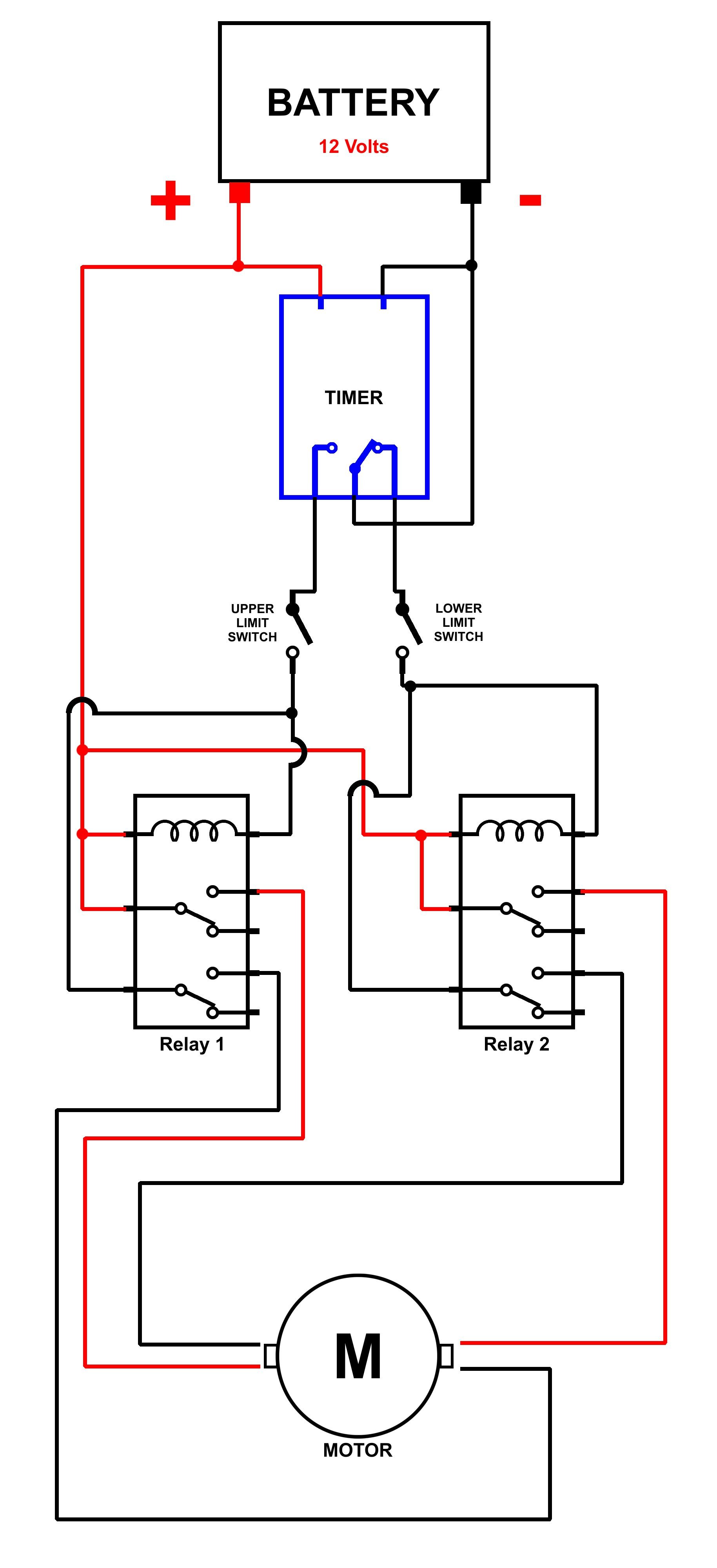Hi all,
I've been pounding my head against this for three hours, and I need fresh eyes. I think what I want to do can be done, it's just eluding me.
This is all 12 volts DC, powered by a standalone SLA battery in the shed.
What I Have:
I have a circuit that raises a door in the morning and lowers it in the evening, using a timer and relays to reverse the direction of the DC motor. Currently, the timer has to stay on all day, then when it turns off it triggers the "down" relay (using the NC contact on the timer). There are limit switches at the top and bottom of the door which shuts off each relay, but the timer's internal relay stays on, and of course, uses power. This is "SchemA.jpg", here:

What I Want:
I'd like to have the timer come on for a minute or two, supplying power ONLY for that time while the door raises or lowers. My first thought was that I could have the limit switch run through the unused contacts on the opposite relay, that way, only the relay whose limit switch is closed gets power, the door travels, hits the limit switch and stops. However, once the door begins its travel, the originally "open" switch goes "closed", and as you can see in "SchemB.jpg" below, that means the opposite relay's coil is energized. (The red question marks).

So, is there a way I can do this so that only one relay is energized at a time? The limit switches I used are the three terminal type, with a COM, NC, and NO terminal. The switches currently are using the NC terminal, so that when the door hits them, it breaks the circuit.
Any suggestions are appreciated.
Jack
I've been pounding my head against this for three hours, and I need fresh eyes. I think what I want to do can be done, it's just eluding me.
This is all 12 volts DC, powered by a standalone SLA battery in the shed.
What I Have:
I have a circuit that raises a door in the morning and lowers it in the evening, using a timer and relays to reverse the direction of the DC motor. Currently, the timer has to stay on all day, then when it turns off it triggers the "down" relay (using the NC contact on the timer). There are limit switches at the top and bottom of the door which shuts off each relay, but the timer's internal relay stays on, and of course, uses power. This is "SchemA.jpg", here:

What I Want:
I'd like to have the timer come on for a minute or two, supplying power ONLY for that time while the door raises or lowers. My first thought was that I could have the limit switch run through the unused contacts on the opposite relay, that way, only the relay whose limit switch is closed gets power, the door travels, hits the limit switch and stops. However, once the door begins its travel, the originally "open" switch goes "closed", and as you can see in "SchemB.jpg" below, that means the opposite relay's coil is energized. (The red question marks).

So, is there a way I can do this so that only one relay is energized at a time? The limit switches I used are the three terminal type, with a COM, NC, and NO terminal. The switches currently are using the NC terminal, so that when the door hits them, it breaks the circuit.
Any suggestions are appreciated.
Jack









